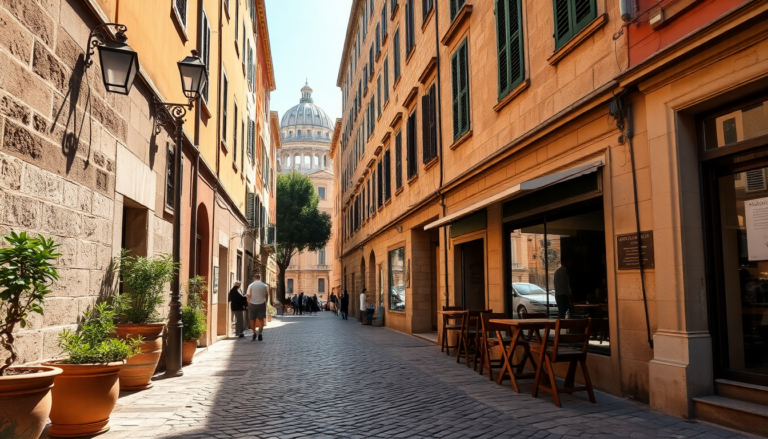Argomenti trattati
Walking through a city can unveil hidden gems and historical treasures that are often missed when traveling by other means. Among the cities in Europe, Rome stands out as a top destination for walking enthusiasts. Recognized for its rich history and stunning architecture, the Italian capital offers a unique blend of ancient ruins, vibrant culture, and picturesque streets, making it an ideal place to explore on foot.
Why Rome is a top walking city
Rome has been celebrated as a top walking city due to its extensive historical significance and the abundance of attractions concentrated within its city center. Unlike many European capitals, where tourists often rely on public transport to navigate, Rome encourages exploration through its pedestrian-friendly streets. Each corner reveals a piece of art, a centuries-old ruin, or a captivating story waiting to be discovered.
The city is described as an open-air museum, where walking becomes an immersive experience. From the ancient glory of the Colosseum to the baroque beauty of the Trevi Fountain, every step taken in Rome is an invitation to delve deeper into its rich narrative. Walking allows visitors to connect with the city’s essence, discovering not just the main attractions but also lesser-known spots that add to the overall charm.
Key walking routes in Rome
To make the most of a walking tour in Rome, starting at the iconic Colosseum is highly recommended. This magnificent amphitheater, once the stage for gladiatorial contests, offers awe-inspiring views of ancient architecture. Nearby, the Roman Forum unfolds a landscape of historical significance, featuring ruins such as the Temple of Saturn and the Arch of Septimius Severus.
The journey continues towards the Pantheon, an architectural marvel renowned for its impressive dome and oculus, inviting natural light into its sacred space. Nearby stands the renowned Trevi Fountain, where visitors toss coins while making wishes, contributing to the fountain’s legendary status. A stroll through the narrow streets will lead to the Spanish Steps, offering a delightful view of the bustling Piazza di Spagna.
While visiting famous landmarks is essential, Rome offers many hidden gems that provide a more intimate glimpse of the city. Venturing into the Trastevere neighborhood reveals charming streets lined with colorful buildings, quaint cafes, and local artisans. This area is perfect for leisurely walks, where the vibrant atmosphere and authentic Roman life come alive.
Another must-visit is the Vatican City, easily accessible on foot. The grandeur of St. Peter’s Basilica and the artistic treasures within the Vatican Museums, including the Sistine Chapel, are highlights not to be missed. Walking along the Tiber River provides a serene escape from the bustling city, especially during sunset when the scenery becomes particularly enchanting.
Comparing other walkable cities
While Rome claims the top spot for walkability, other cities such as Budapest and Madrid also deserve recognition. Budapest, known as the ‘Paris of the East,’ boasts a stunning layout perfect for walking, offering scenic views along the Danube River and historic sites like Buda Castle. Madrid, with its lively plazas and rich culture, invites travelers to explore its streets filled with tapas bars and vibrant life.
Embracing slow tourism
The trend towards slow tourism emphasizes the importance of experiencing destinations at a more relaxed pace. Walking encourages deeper connections with the environment, fostering a greater appreciation for local traditions and cultures. Rome exemplifies this approach, with its abundance of thematic walking routes that showcase the city’s artistic heritage and historical narratives.
As travelers increasingly seek sustainable and meaningful experiences, walking through cities remains a cherished way to explore. Embracing this method not only benefits the environment but also enriches the travel experience, allowing for moments of reflection and discovery along the way.

